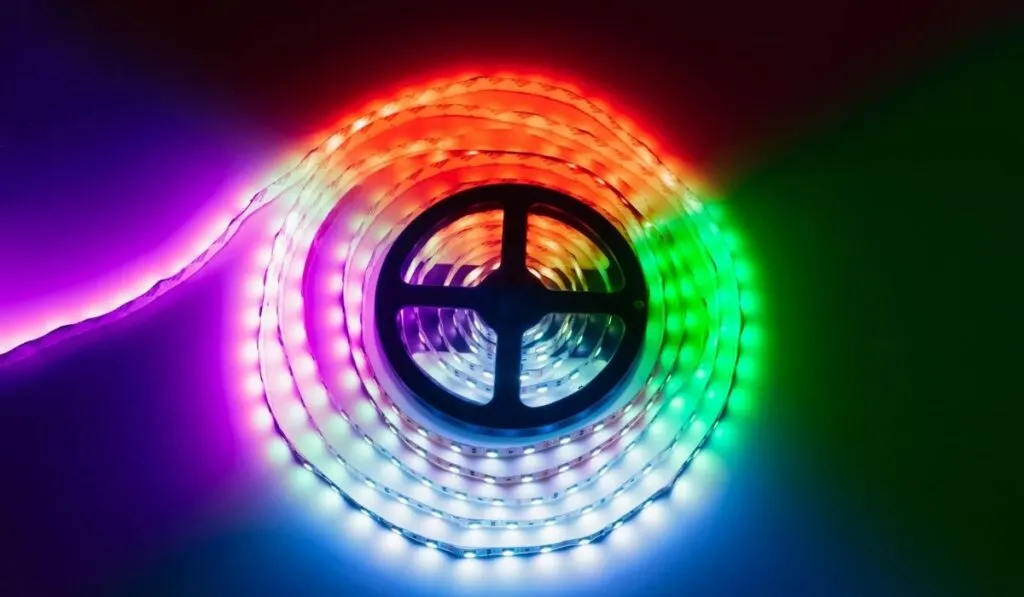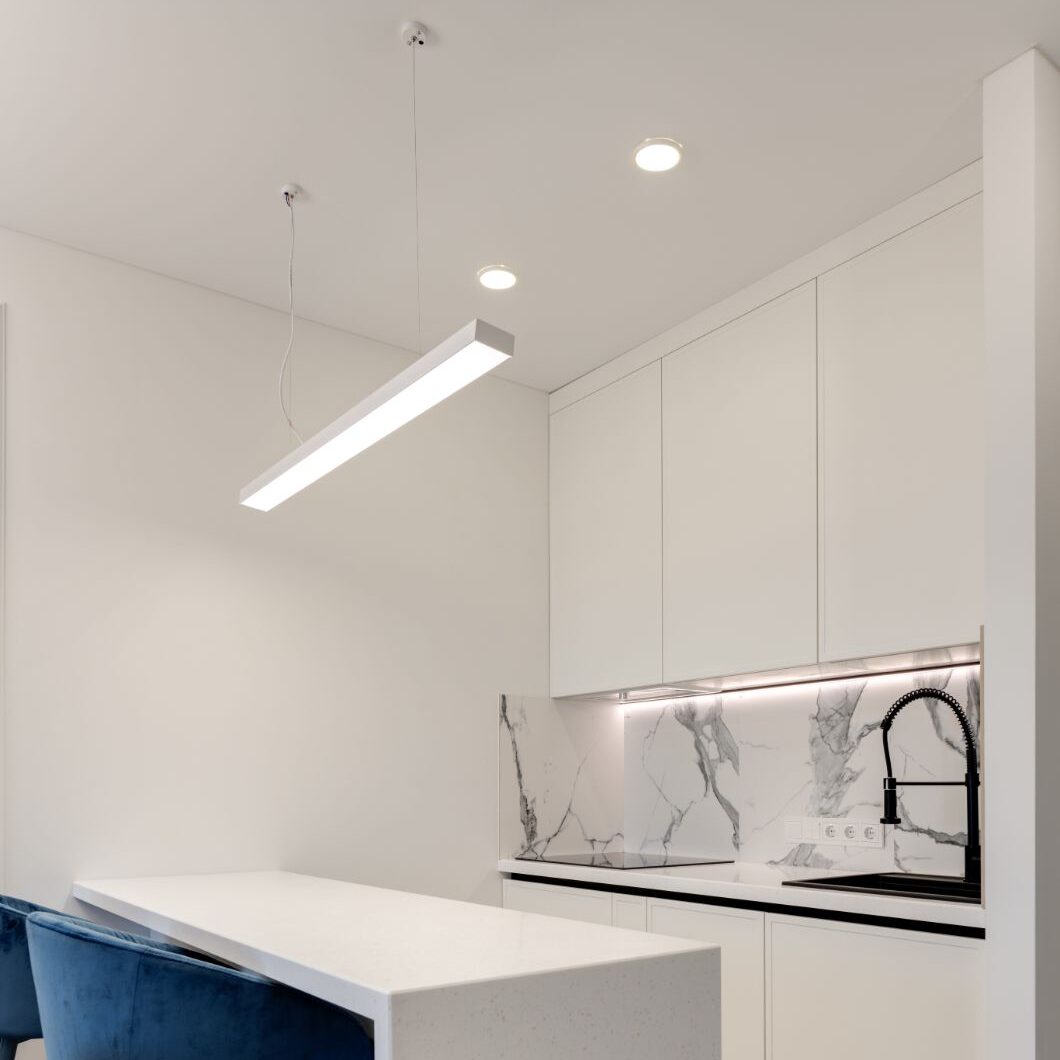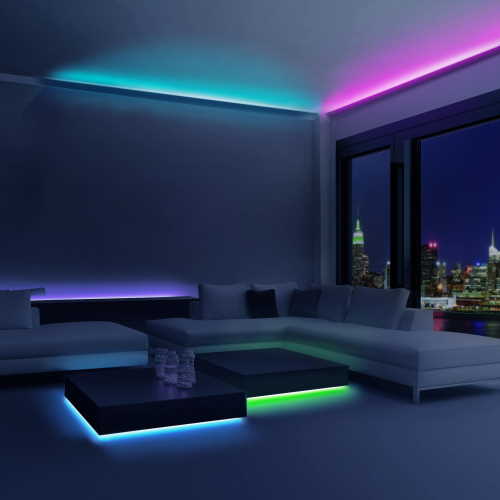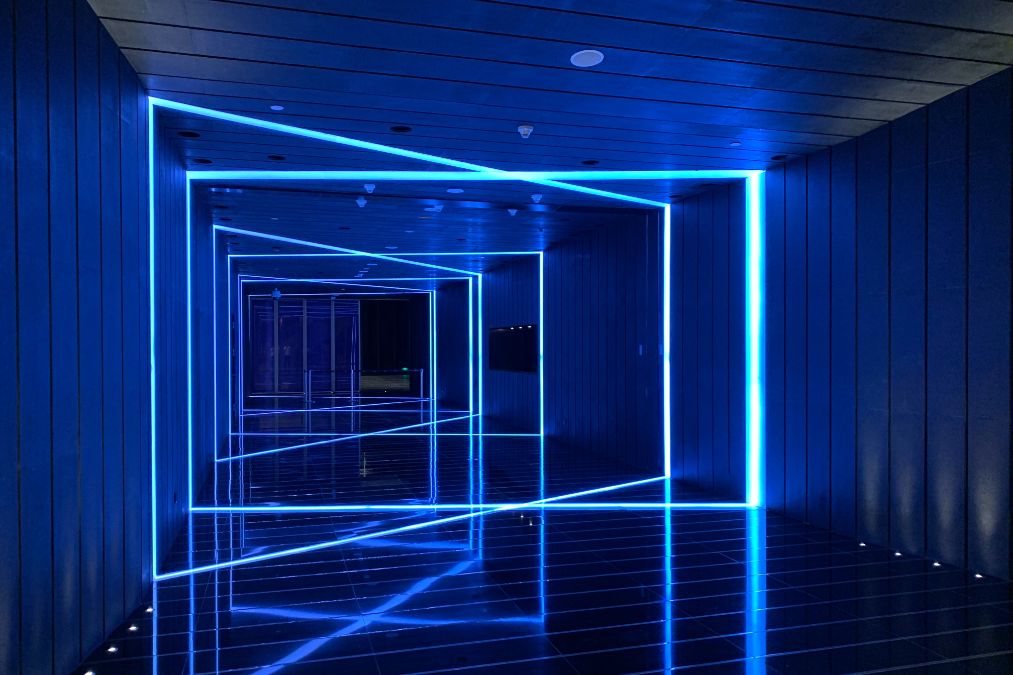It’s possible that the long lifespan promises of LED Strip lights have drawn you in. But how long do they actually last? If you’re unsure about the manufacturer’s lifetime claims or you’re just curious how long LED Strips can last and how to extend their lifespan, keep reading.
It’s likely that you are familiar with LED light strips if you are interested in using decorative lighting fixtures. These light strips have recently taken the world by storm in terms of fashionable lighting.
Additionally, we observe the use of LED Strips for a variety of practical uses. These lights are not only incredibly functional and adaptable, but they are also very strong and long-lasting. LED light strips come in a variety of colors and have a very long lifespan.
Therefore, if you’re wondering how long LED light strips last, you should be aware that LED lights have a long lifespan. However, a variety of factors can impact how long your LED Strip lasts.
Let’s examine the lifespan of LED light strips in greater detail, as well as the elements that affect their functional lifespan.
How Long Do LED Strip Lights Last?
Do you want a quick solution? A high-quality LED light strip should last for at least a few years.
LEDs gradually lose their brightness over time, unlike conventional incandescent lights. This allows us to designate their “useful life” and their “end of life”.
The number of hours until the LED loses roughly 70% of its light output is referred to as the “useful life.” Beyond 70% is its “end of life” which is often too dim of a light output to be of any use.
Understanding L80, L70 and L50
These numbers provide customers with a label to use that indicates when the light is anticipated to stop functioning after a specific number of hours.
For instance, an L80 label should function at least 80% of its useful life for 50,000 hours. Furthermore, an L70 is predicted to operate for 50,000 hours at least 70% of the time.
It may be misleading because LED light strips may, of course, continue to function after 70%. But the lights will slowly enter their “end of life” phase in the remaining 20% or 30% until too low to provide illumination.

How is L70 Calculated?
The choice of materials, their strength, and their quality are just a few of the many variables that affect LED longevity. But generally speaking, increased drive currents and temperatures both hasten the fading of light output.
Given the wide range of material choices made by different LED types and manufacturers, the LM-80 test methodology was created to establish the benchmark for tests on the durability of lighting.
The LM-80 standard calls for testing sample specimens at predetermined drive currents and temperatures, with variations in the light output being measured every 1000 hours up to 10,000 hours.
To ensure unbiased results, LM-80 tests are typically carried out at independent laboratories. The results are then made public in report format. All respectable producers will perform this test on their LEDs, and a respectable LED Strip supplier ought to have no trouble giving it to you, especially if you’re purchasing in bulk.
LED longevity testing is challenging because it takes a long time. A 10,000-hour test would take about 14 months even if the LEDs were on all the time. In a sector as fast-paced as LED lighting, this is an eternity. A product would need to be tested for close to 6 years in order to meet the full 50,000-hour claim.
As a result, the TM-21 extrapolation algorithm was created. The algorithm outputs an estimated lifetime number after analyzing the performance of the LM80 samples over the first few thousand hours. This figure is typically provided on specification sheets and warranty statements.
Why Do LED Lights Last So Long?
Compared to incandescent light bulbs, LEDs have a much longer lifespan. They are up to 90% more efficient, which is why. This is due to the fact that none of their functional components are made to wear out or break down over time.
Standard LED lights are well known to be very durable. They don’t have any glass that could break and don’t have any parts that could wear out. Furthermore, they are not constructed of easily broken, brittle glass. This indicates that they last a lot longer than standard light bulbs.
They stand out because of their unusual way of producing light, which is an essential component of their longevity. These devices have two distinct doped regions, P and N, and are constructed from substrate semiconductor materials.
The moment the current passes through the PN junction, the electrons jump to higher atomic energy states. When the electrons return to the ground state, light is released as protons.
This phenomenon, known as electroluminescence, uses a very small amount of energy and produces very little heat.
9 Factors That Determine How Long Do LED Light Strips Last

LED Strip lights have a lifespan of about six years, but a number of factors, such as how frequently they are used and the caliber of the product, affect this lifespan. Here are the details:
Installation Process
The installation procedure is one of the main factors that affect how long LED light strips will last. This includes taking into account your ability to follow instructions and whether you have ever performed any electrical work before.
Quality of Strip
Avoid purchasing cheap, inferior LED light strips. Make certain the brand of the strip you’re purchasing is reputable and well-known, such as Hyperikon, LUMii, or KOWA. LED lights of a lower quality are more likely to fail more quickly.
Solderless Vs. Screw Terminal
There are some LED lights that might not have solderless connections and require screwing into place. Because of the frequent connection and disconnection from the source unit, the installation may require the use of a screwdriver, which could reduce the lifespan of the strip.
Exposure to Moisture Or Heat
Extreme heat and moisture can damage LEDs. Therefore, the strip will fail more quickly than a unit kept in dry air or covered with plastic if exposed to high moisture levels for extended periods of time.
Electrical Wire Connections
Your LEDs’ lifespan may also be impacted by this element. Make sure the strip is connected to the power source using the correct gauge of wire.
The voltage drop along a wire’s length will be more pronounced the smaller it is, which will reduce the wire’s lifespan.
Environmental Protection
Make sure your LED Strip is enclosed in a sturdy protective shell if you want to increase its lifespan. The cover should also be sufficiently sealed to prevent any inside moisture or dirt from harming the lights.
Usage
How you use your LEDs will affect how long they last. You’ll get a longer lifespan if you only use them occasionally and just for ambiance. On the other hand, using them for task lighting or placing them in direct sunlight will reduce their lifespan.
Warranty
How long the LEDs are anticipated to last can also be gleaned from the warranty provided by your LED distributor. A good LED light strip should typically have a warranty of at least 36 months.
Quality of the Power Source
Think about the power source’s performance when buying your LED Strip. You can anticipate that a low-cost, low-end model will perform less effectively than a model of higher quality that has undergone durability testing.

How to Extend the Lifespan of LED Light Strips?
Now that you are aware of the factors that affect an LED Strip’s lifespan, you can take the following extra precautions to ensure that your lights last even longer.
By Collecting the Dust
Your LED Strips will inevitably gather dust over time. Your LED Strip’s circuitry could be damaged by a lot of dust. The LED Strips should therefore be cleaned frequently.
Consider using a vacuum cleaner or blower to remove the dust rather than wiping it off. With no need to touch the components, you can clean them this way.
Keep a Cool Temperature
Install the strips as close to regular room temperature as you can. Place the lights away from areas that receive a lot of direct sunlight.
Additionally, keep in mind that installing LED lights near other electrical appliances may have an impact on this because some appliances produce a lot of heat. If you want to install LED lights near your computer, you should take this into account.
Use Lower Junction
In addition to allowing LED Strips to maintain temperature, having a lower junction temperature also extends the time during which they can maintain their brightness.
Avoid Series Connection
The voltage requirements significantly increase when LEDs are connected in series circuits. This significantly increases the strain on your wires and power supply and also raises the temperatures of the strips.
As a result, you must always connect your LED Strip connections in parallel.
Regular Check
Regular inspection and upkeep are crucial for extending the life of your products, just like with any electrical component.
One thing we always advise people to do when they inquire about the lifespan of LED Strips is to keep an eye on their lighting fixtures. You’ll be able to take care of any minor issues in this manner before they become more serious.
Do Not Bend Your Strips
Your LED Strips’ internal parts will be under stress and strain if you bend them. We advise using back-to-back or 90-degree connectors to connect your LED Strips around corners if you need to loop or reverse the direction of your strips.
Be aware that bending these strips might void their warranty.
Use Gloves While Installing
The components of an LED could malfunction due to oil and moisture from your hands. When handling these products, wear gloves to prevent this.
FAQs
Is It Safe to Leave LED Lights On?
Well-known brands’ LED lights are put through rigorous and thorough testing to determine their safety. You shouldn’t have to worry about leaving them on for too long as long as you purchase these brands.
Don’t forget to install these lights in a place that protects them from the elements.
Do LED Light Strips Burn Out?
LED Light strips do not have the potential to heat up to abnormally high temperatures where they would burn out as long as they are installed and used properly. Instead of going out, the components simply begin to produce less and less output, which over time causes the lights to fade.
Do LED Strip Lights Use a Lot of Electricity?
The electricity use of the LED Strips may differ depending on how well they work. Since the RGBIC LED Strip has more components than an RGB LED Strip and therefore consumes more electricity.
But as we already mentioned, contemporary LED Lights are extremely energy-efficient, using a lot less power than conventional lights.
Conclusion
50,000 hours can typically be added to the lifespan of an LED Strip. But the actual lifespan of the LED Strip will depend on the quality of the raw materials, including the LEDs, FPCBs, and resistors, as well as how heat is managed and the power supply.
Remember, it’s simple to cut corners on the price of an LED Light fixture, but if you want a durable, color-accurate LED, it’s best to invest a little bit more upfront and enjoy the benefits for years to come.
